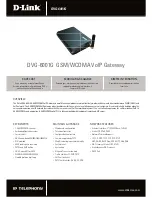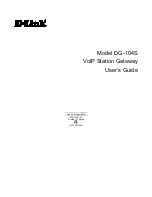CELLULAR INFORMATION
MultiConnect® OCG-E MT100EOCG-EV3 Developer Guide
39
Chapter 6 – Cellular Information
Antenna System Cellular Devices
The cellular/wireless performance depends on the implementation and antenna design. The integration of the
antenna system into the product is a critical part of the design process; therefore, it is essential to consider it early
so the performance is not compromised. If changes are made to the device's certified antenna system, then
recertification will be required by specific network carriers.
The antenna system is defined as the UFL connection point from the device to the specified cable specifications
and specified antenna specifications.
CDMA Antenna Requirements/Specifications
Category
Description
Frequency range
824 – 894 MHz / 1850 – 1990 MHz
Impedance
50 Ohms
VSWR
VSWR shall not exceed 2.0:1 at any point across the
bands of operation
Typical radiated gain (to meet PTCRB)
0 dBi on azimuth plane / 2 dBi on azimuth plane
Maximum radiated gain allowed by FCC
10 dBi on azimuth plane /8.9 dBi on azimuth plane
Radiation
Omni-directional .
Polarization
Vertical
TRP/TIS
The total radiated power (TRP) at the antenna shall be
no less than +21/20 dBm for PCS/CELL channels
respectively, and the total isotropic sensitivity (TIS) at
the antenna shall be no less than -104/104 dBm for
PCS/CELL channels respectively
GSM/EGSM Antenna Requirements/Specifications
Category
Description
Frequency Range
824—960 MHz / 1710—1990 MHz
Impedance
50 Ohms
VSWR
VSWR should not exceed 2.0:1 at any point across the bands of operation
Typical radiated gain (to
meet PTCRB)
0 dBi on azimuth plane / 2 dBi on azimuth plane
Maximum radiated gain
allowed by FCC
6.9 dBi on azimuth plane /3.1 dBi on azimuth planes
Radiation
Omni-directional
Polarization
Vertical


















